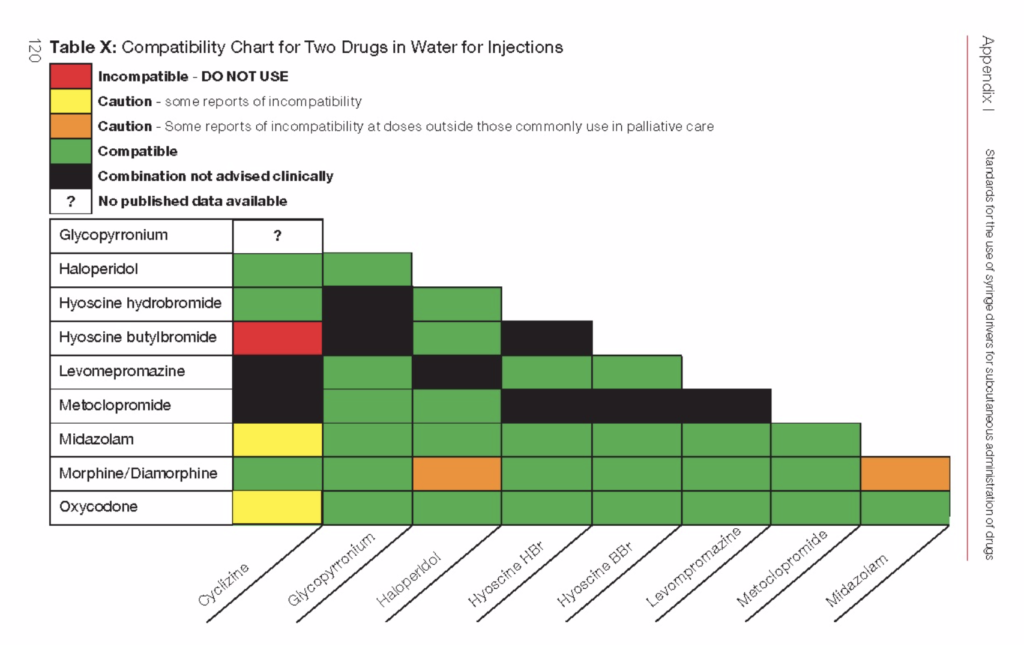

Indications for starting a Syringe Driver/Pump
The syringe driver/pump may be indicated in the following situations:
- persistent nausea or vomiting
- difficulty swallowing
- poor alimentary absorption
- intestinal obstruction
- profound weakness / cachexia
- comatose or moribund patient
- administration of drugs that cannot be given by non-parenteral routes
Care of the Syringe Driver/Pump
If doses of drugs need to be altered, then change the syringe, the contents, and the infusion line. It is not recommended to alter the rate of infusion.
Check the syringe driver/pump and infusion regularly for:
- irritation at the injection site (site reaction) – change site or ask specialist advice (may require a change of diluent, drugs combinations or an increase in syringe size)
- crystallisation of drug (seek specialist advice)
- discolouration (seek specialist advice)
- light flashing (if not check the battery)
- secure connections or kinked tubing
- leakage
- correct volume remaining
Choice of infusion sites
Sites of choice include:
- anterior chest wall
- lateral upper arms
- anterior abdominal wall
- anterior outer thigh
- area over scapula (in confused or disorientated patient)
Avoid areas of inflammation, oedema, broken skin, bony prominences, recently irradiated areas, sites of tumour, sites of infection, skin folds or lymphoedema.
Selection of drugs
The choice of drug is dictated by the symptom, and the compatibility with other drugs to be delivered. See Compatibility Chart below:

Contact your specialist palliative care team if further advice on compatibilities is needed.
Prescribing for the Syringe Driver/Pump
The dose of each drug to be given by infusion over a specified time period (usually 24 hours) should be clearly written.
- Opioids via the syringe driver/pump will not give better analgesia than orally unless there is a problem with absorption or administration of the drug
- Long term use is rarely indicated but if required a syringe driver/pump may be maintained as long as is necessary
Disclaimer
This Guide is intended for use by healthcare professionals and the expectation is that they will use clinical judgement, medical, and nursing knowledge in applying the general principles and recommendations contained within. They are not meant to replace the many available texts on the subject of palliative care.
Some of the management strategies describe the use of drugs outside their licensed indications. They are, however, established and accepted good practice. Please refer to the current BNF for further guidance.
While WMPCPS takes every care to compile accurate information , we cannot guarantee its correctness and completeness and it is subject to change. We do not accept responsibility for any loss, damage or expense resulting from the use of this information.